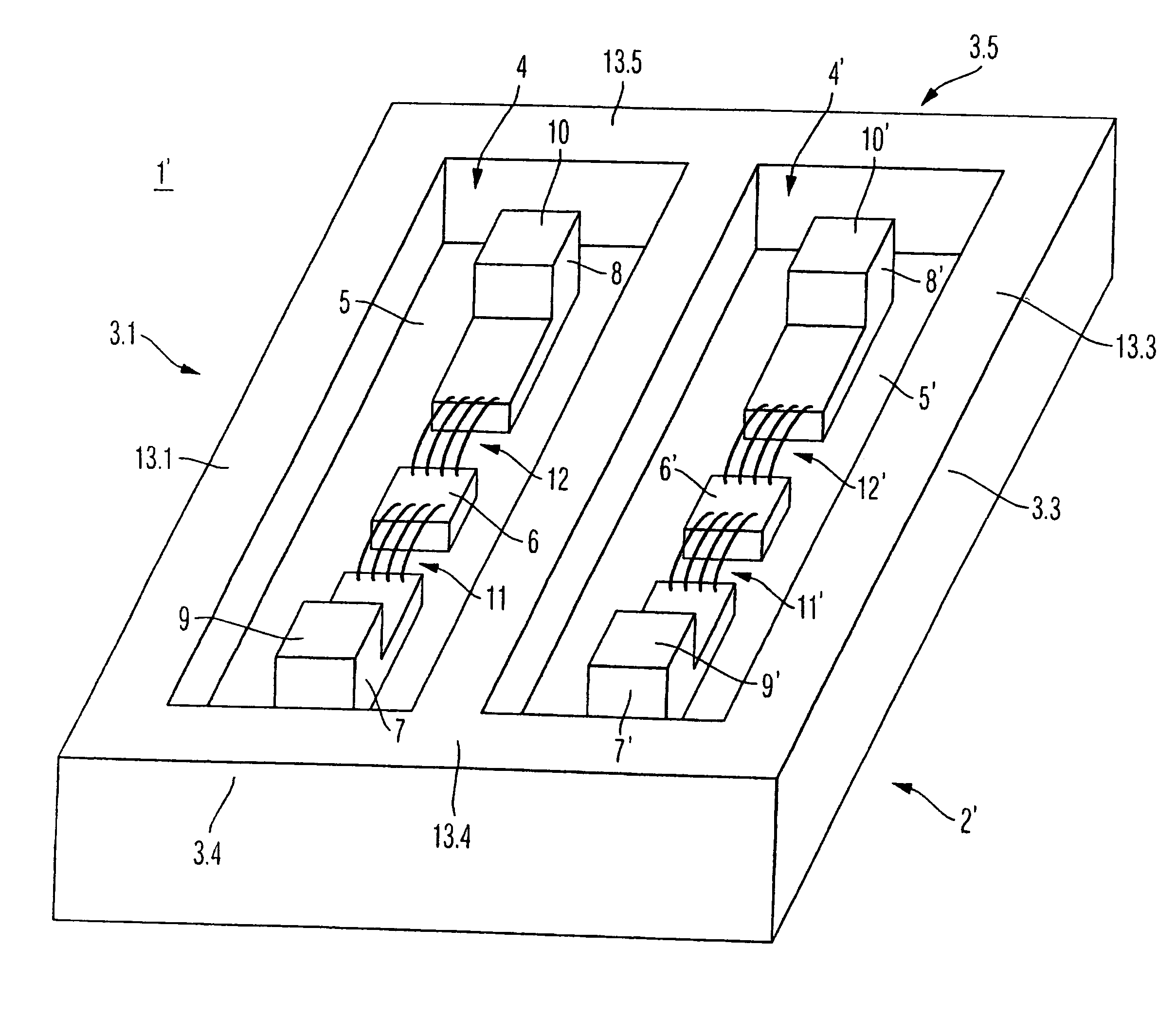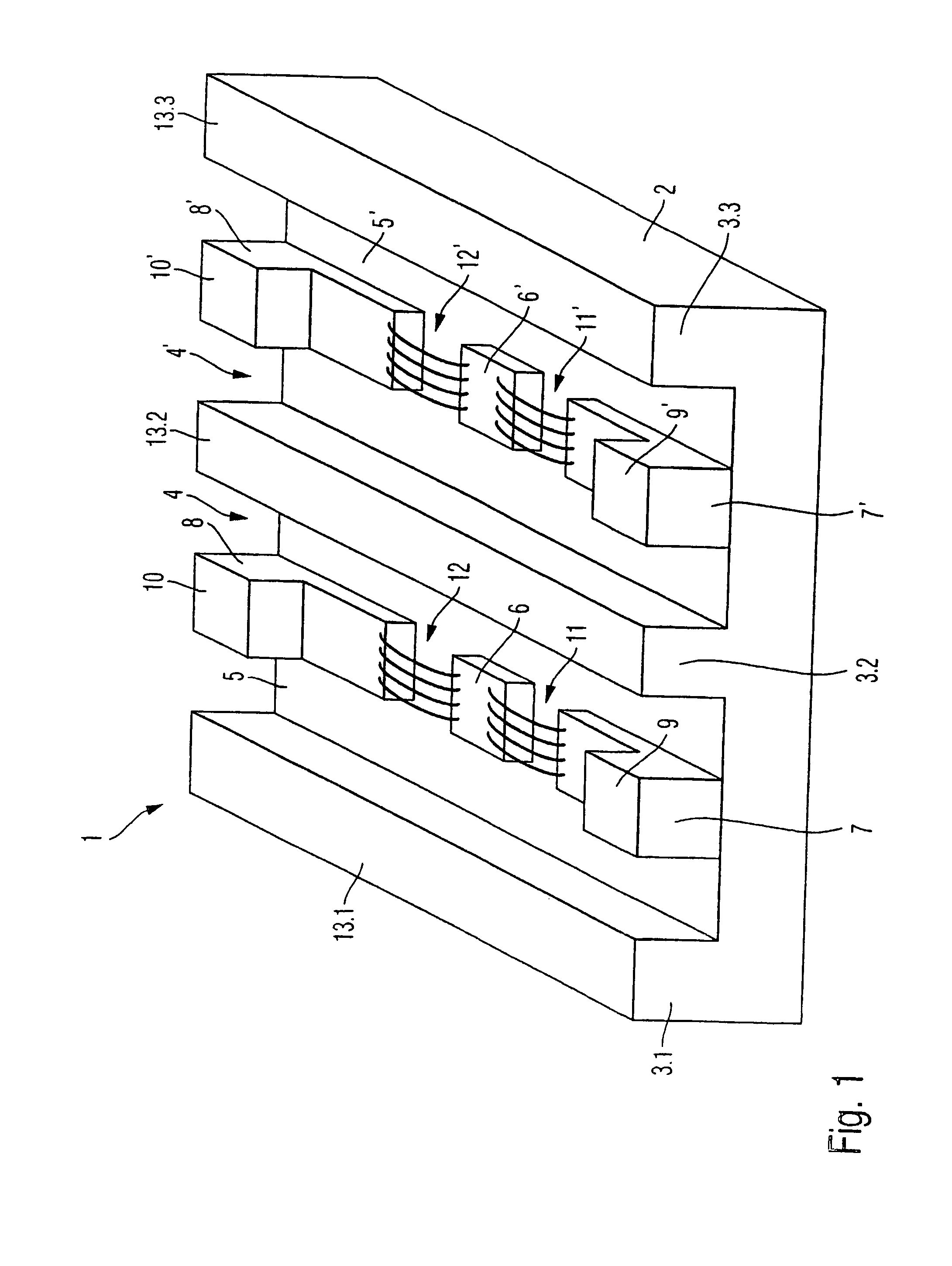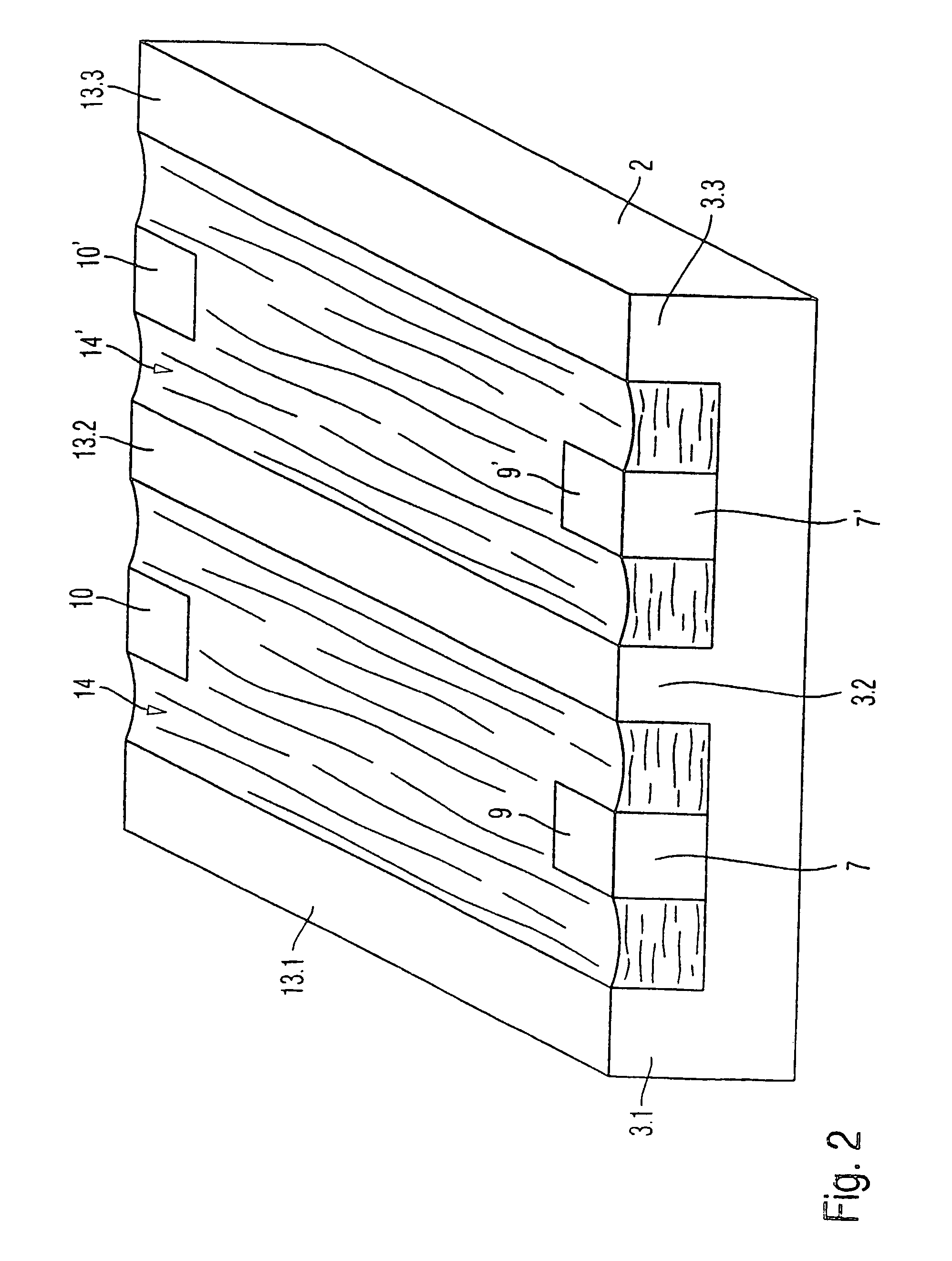Electronic component comprising a cooling surface
- Summary
- Abstract
- Description
- Claims
- Application Information
AI Technical Summary
Benefits of technology
Problems solved by technology
Method used
Image
Examples
Embodiment Construction
)
[0025]FIG. 1 shows a first exemplary embodiment of an electronic component 1 according to the invention. A substantial part of the housing of the electronic component 1 is formed by a first connecting element 2. In the first exemplary embodiment, the first connecting element 2 is formed with a rectangular base surface. Parallel to an outer edge of the rectangular base surface, a first raised region 3.1, a second raised region 3.2 and a third raised region 3.3 are formed on the side of the electronic component 1, which will be arranged on the printed-circuit board after assembly. The three raised regions 3.1, 3.2 and 3.3 are distributed uniformly over the base surface of the first connecting element 2.
[0026]A recessed region 4 and respectively 4′ is formed between the adjacent raised regions, that is to say, between the first raised region 3.1 and the second raised region 3.2, and between the second raised region 3.2 and the third raised region 3.3 respectively. These recessed regio...
PUM
 Login to View More
Login to View More Abstract
Description
Claims
Application Information
 Login to View More
Login to View More - R&D
- Intellectual Property
- Life Sciences
- Materials
- Tech Scout
- Unparalleled Data Quality
- Higher Quality Content
- 60% Fewer Hallucinations
Browse by: Latest US Patents, China's latest patents, Technical Efficacy Thesaurus, Application Domain, Technology Topic, Popular Technical Reports.
© 2025 PatSnap. All rights reserved.Legal|Privacy policy|Modern Slavery Act Transparency Statement|Sitemap|About US| Contact US: help@patsnap.com



